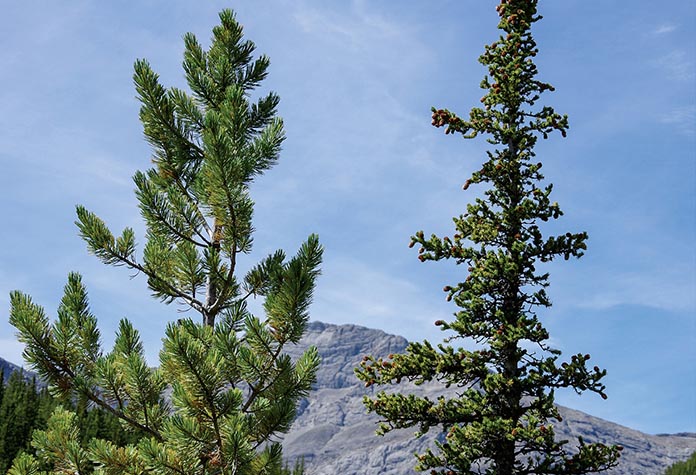
Faculty of ALES researchers will study lodgepole pine and white spruce which are the most important sources of wood and fibre for Western Canada, worth approximately $10 billion annually in economic activity.
Last year, at a European conference, two graduate forestry students in the Faculty of Agricultural, Life & Environmental Sciences heard about a new technique in tree-ring research that was developed in Italy, and told their professor about it. Today, the federal government announced support for a climate change study based on that new method, which those researchers will carry out in Alberta and British Columbia.
Their study is one of six at the University of Alberta funded by a $2.9 million grant from the National Sciences and Research Council of Canada (NSERC) through its Strategic Partnership Grants for Projects.
The ALES study will look at the risks lodgepole pine and white spruce face due to the warming of their environment caused by climate change. It will also determine how far north and how much higher in elevation the forestry industry can move those tree populations to help them thrive.
"One risk is that we might inadvertently move populations too far, or too fast, to colder environments, where the trees might suffer severe frost damage due to rare extreme frost events that they are not adapted to withstand," said Andreas Hamann, a forest geneticist from the Department of Renewable Resources who will lead the study.
David Montwe and Miriam Isaac-Renton are the graduate researchers who recognized the potential of the new tree-ring research technique, which detects historical frost damage during wood formation.
Essentially, when a wood stain is applied to a tree-ring core, it leaves unique blue ring "signatures" whenever the tree suffered frost damage while laying down a new tree ring. From those signature stains, researchers can date the history of damage in trees that have been grown for decades in test plantations, where seeds were transferred from warmer regions.
"Specifically, we're looking for lower and upper limits to seed transfer," said Hamann.
"We need to avoid poor growth and poor health of trees by moving reforestation stock north and up in elevation to address future climate change. At the same time, we need to research the frost tolerance limits of trees to withstand rare cold events that they may encounter in these environments at present."
Lodgepole pine and white spruce are being studied because they are the most important sources of wood and fibre for Western Canada, worth approximately $10 billion annually in economic activity.
"In the system we have had in the past, we collect seeds within a climatic or ecological zone and plant within the same zone," said Hamann.
"British Columbia has started large-scale systematic movement of reforestation stock, while Alberta permits seed movement on a case-by-case basis, if the industry requests it. This NSERC research project will support seed transfer policy development for the government partners in Alberta and B.C."